Affiliate links on Android Authority may earn us a commission. Learn more.
Video review: Samsung Galaxy S3 vs HTCEvo 4G LTE - Which one is the best?
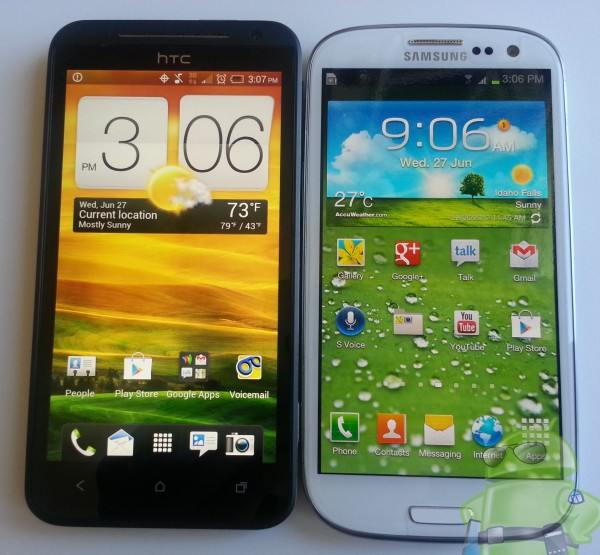
Android manufacturers are hard at work producing their take on the world’s best smartphone. Luckily for us Android fans, this summer, there is no shortage of contenders for the highly coveted title of King of the Android hill.
Right now, perhaps, the fiercest rivalry in the Android world is the one between leading manufacturers HTCand Samsung. The stories of the arch-rivals couldn’t be more different. HTCled the smartphone revolution and commanded a sizable portion of the market up until recently. But now, the tides have turned, and the Taiwanese are struggling to return to their former glory, largely depending on the success of their highly acclaimed One series. On the other side, Samsung rocketed from anonymity to the first position in the market in just a few years, helped by the staggering success of its flagship Galaxy S series. Now, the Koreans are pushing harder the hugely hyped Galaxy S3, and consumers seem to be embracing it with a new type of fanaticism and fervor worldwide.
The HTCOne X enjoyed a head start against the Galaxy S3, but HTChas thrown another wrench in Sammy’s gears with their revamped EVO 4G LTE. The Sprint exclusive device is basically a souped up version of the One X that comes with a couple of bonus features over its One cousin. All signs point to the fact that the HTCEVO 4G LTE is growing to be very popular, but can it snuff out the Galaxy S3’s dominance?
And so — without further ado –we have pitted our Sprint EVO 4G LTE against our international (GSM) and Sprint versions of the Galaxy S3 to find out which one reigns supreme in this battle royale! Hold on to your seats!
Hardware
Samsung Galaxy S3
- 4.8″ Super AMOLED touchscreen, with 720×1280 resolution and 306 pixels per inch
- GSM: Quad-core 1.4GHz Cortex-A9 processor / Sprint: dual-core 1.5GHz Snapdragon processor
- GSM: 1GB RAM / Sprint: 2GB RAM
- 8MP rear-facing camera with 1080p video
- 1.9MP front facing camera with 720p video
- 2100 mAh removable battery
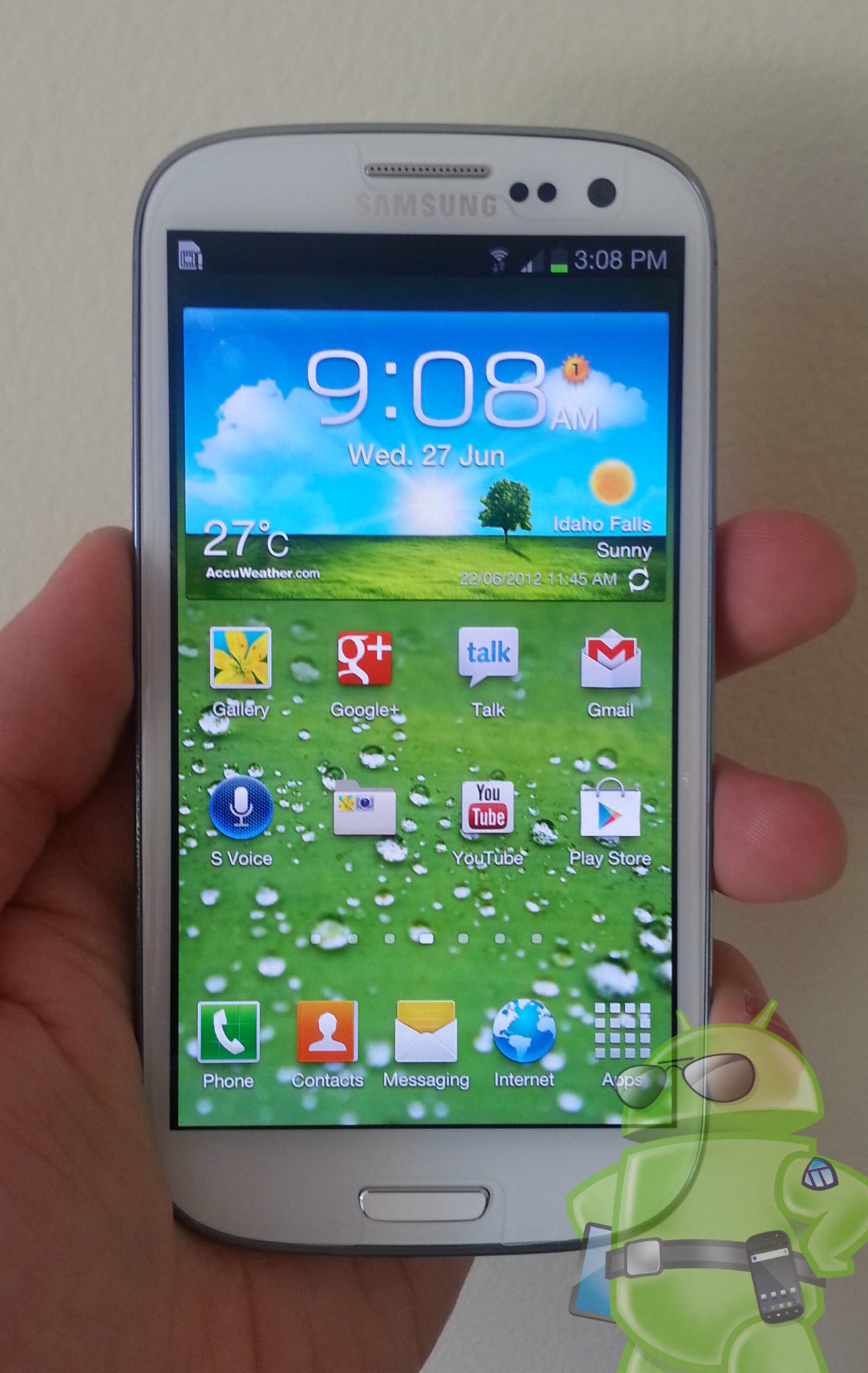
HTC Evo 4G LTE
- 4.7″ Super IPS LCD2 touchscreen, with 720×1280 resolution and 312 pixels per inch
- Dual-core 1.5GHz Snapdragon processor
- 1GB RAM
- 8MP rear-facing camera with 1080p video
- 1.3MP front facing camera with 720p video
- non-removable 2000mAh battery
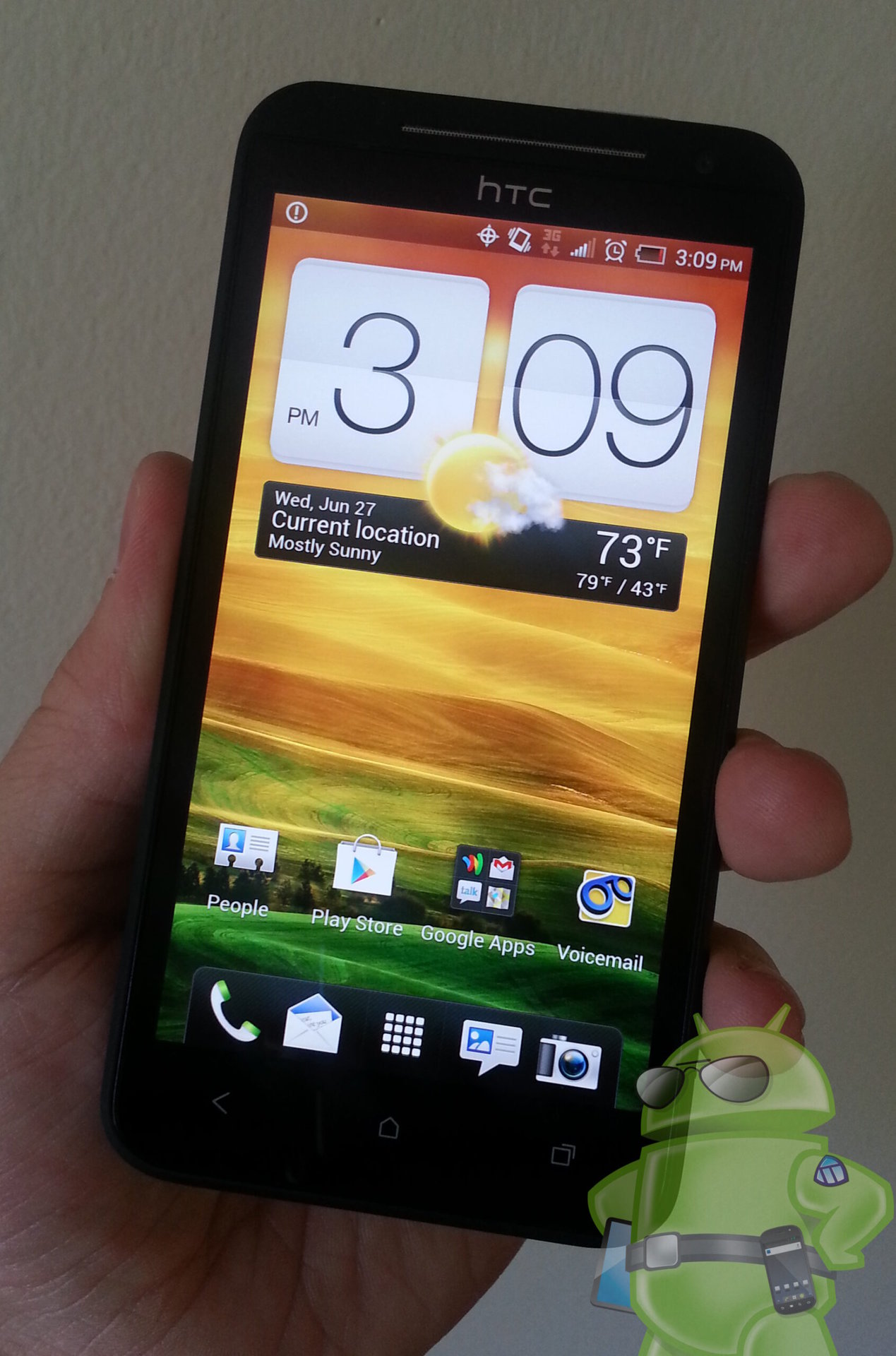
Software
Both phones run on Android 4.0 Ice Cream Sandwich, but the difference is made by the overlays applied by the two manufacturers. The Galaxy S3 uses the Touchwiz 4 (Nature UI) skin atop ICS, while the EVO uses HTC’s revamped Sense 4.0 overlay. The Touchwiz UI comes pre-loaded with many of Samsung’s newest apps, such as S-Voice and S-Memo.
HTC’s EVO includes Beats Audio software, which the Taiwanese claim to boost the quality of the output sound. While some of the customizations and added apps that can be found on the Touchwiz and Sense overlays are useful and attractive, many consider the vanilla ICS experience to be superior.
HTC’s Sense UI is very easy to use, and is extremely pleasing to the eye. On the EVO, folders can be easily created and accessed, and the settings menu looks sophisticated and well designed. Folders are a bit more difficult to make on the Touchwiz UI, but still serve as handy tools.
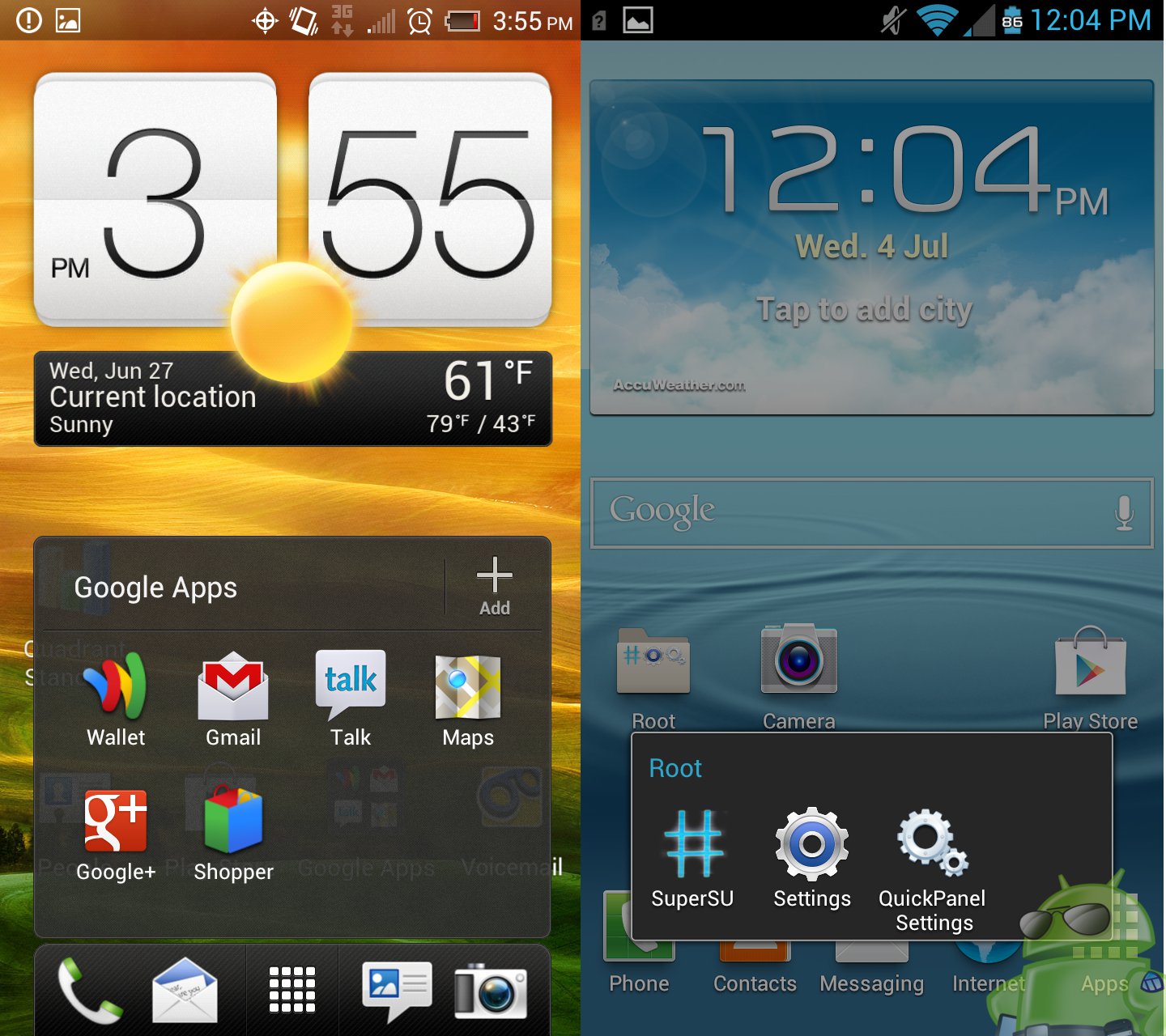
I found that the recent app management on the EVO 4G LTE is more attractive than the S3’s, but, on the down side, it lacks a Task Manager and it’s slower at ending running apps.
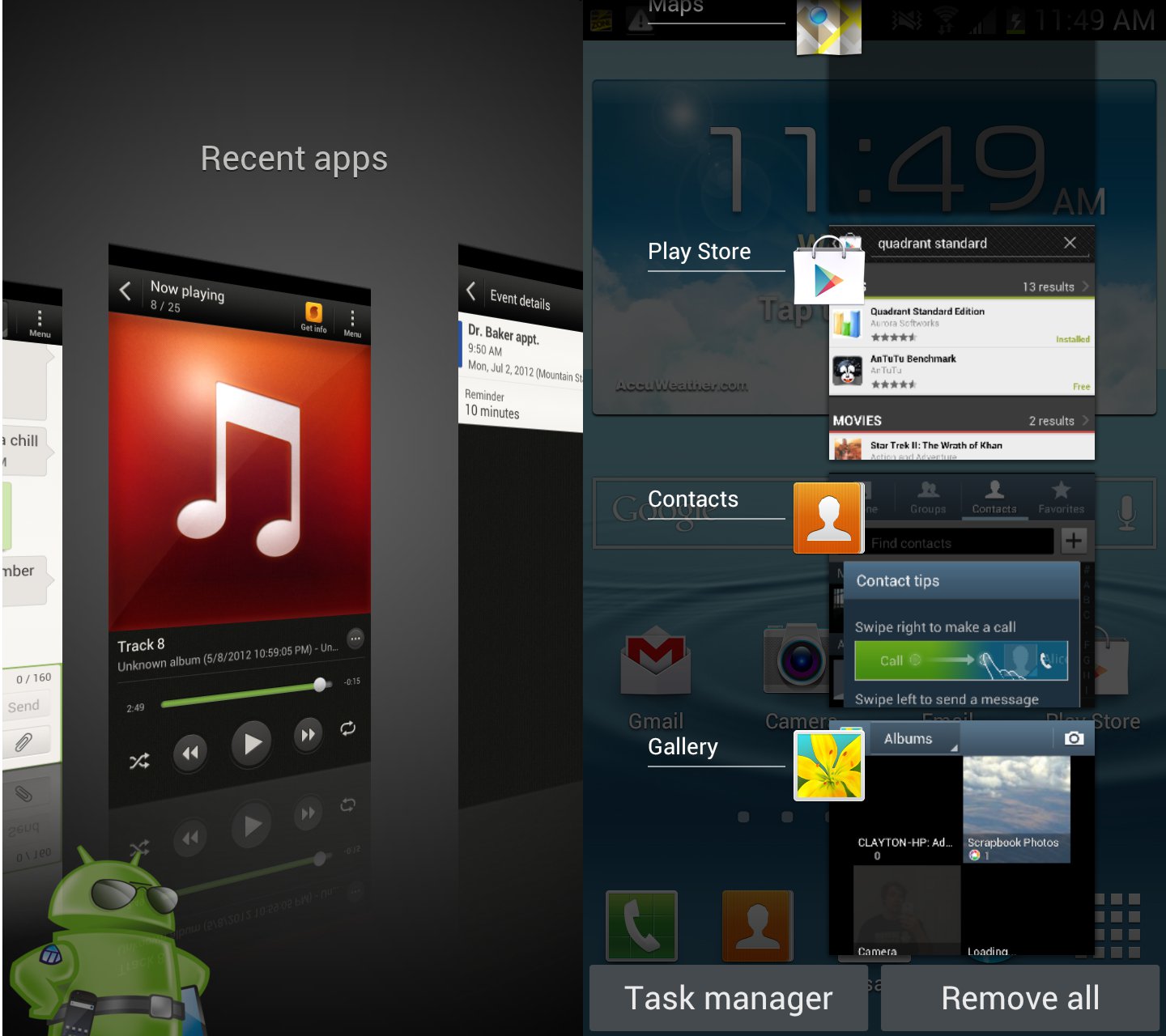
The lockscreen of the Galaxy S3 is more customizable than that of the EVO 4G LTE, but the most used apps are still easily accessible from the lockscreens of both devices.
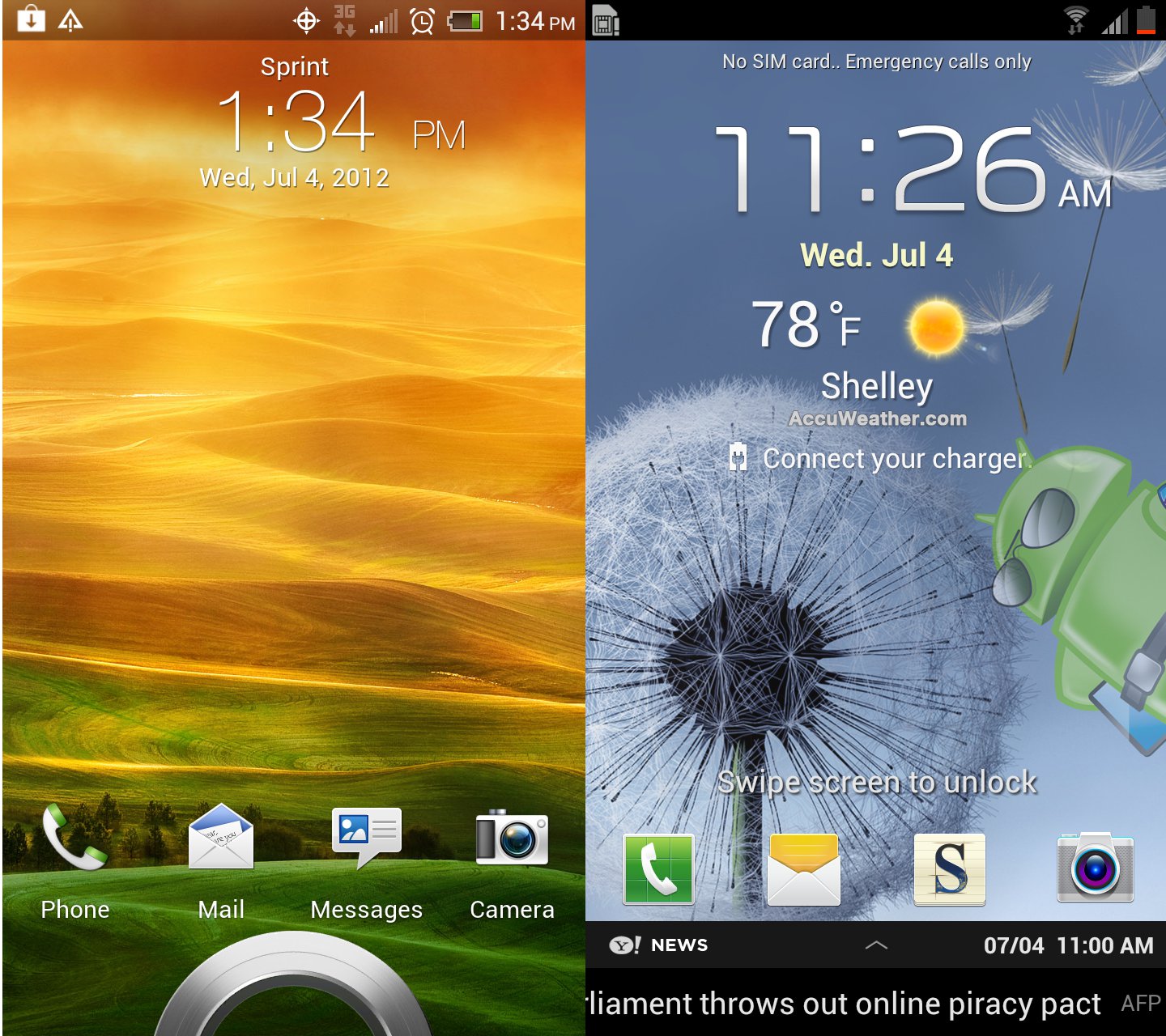
Display
The IPS LCD display of the HTCEVO 4G measures 4.7 inches across and is protected by a sheet of Corning Gorilla Glass. The Super AMOLED display of the Galaxy S3 is protected by Gorilla Glass 2, a thinner and stronger version of Corning’s durable glass.
As for the old LCD vs AMOLED debate, purists tend to favor LCD displays, but many users swear by the beautiful colors delivered by OLEDs. I found the LCD on the HTCphone to be a bit more reflective, but, overall it’s a great display. Nevertheless, I love the true blacks of the Galaxy S3’s AMOLED display, which are emphasized by the dark theme of some of the UI elements on the S3.
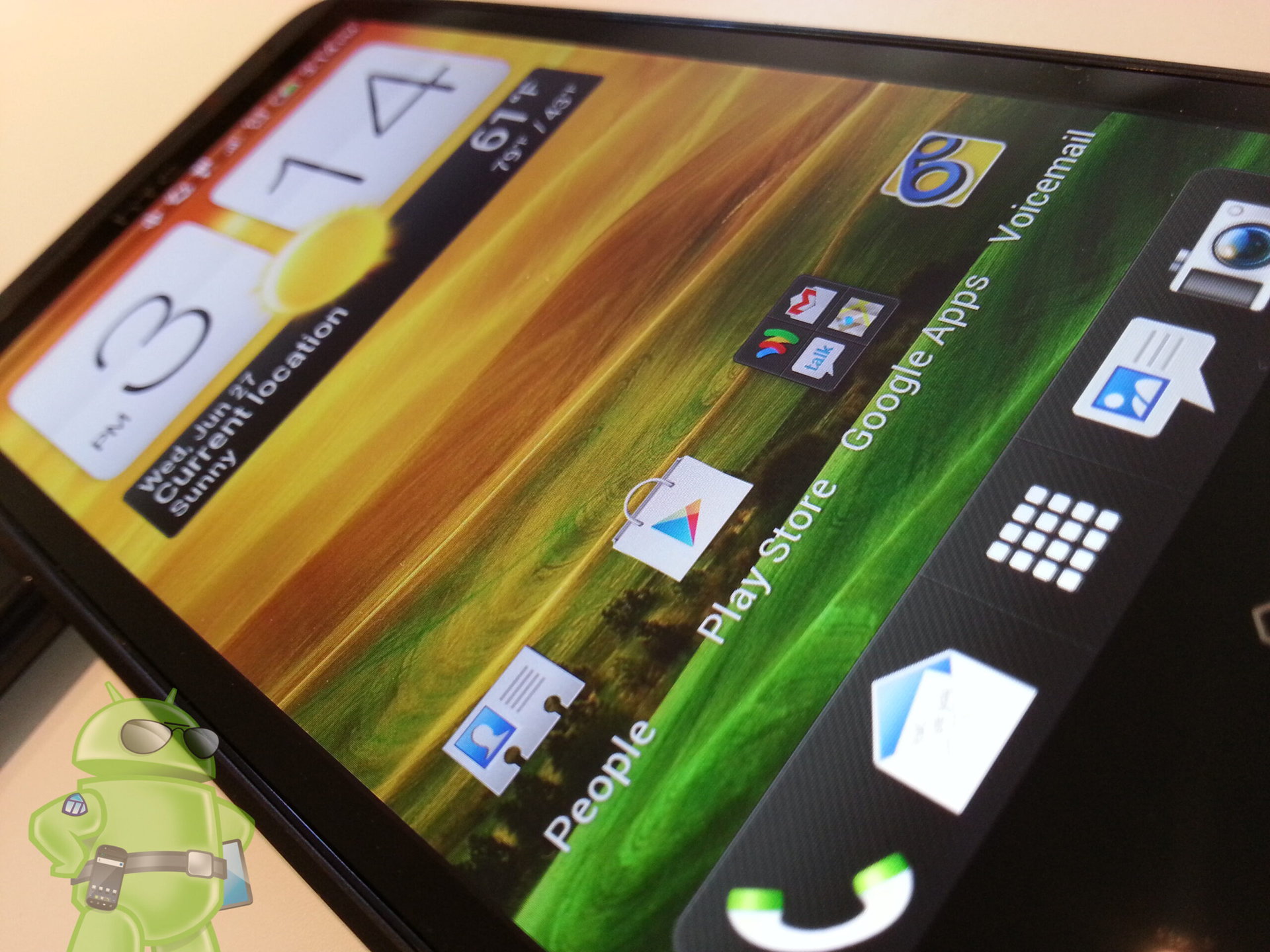
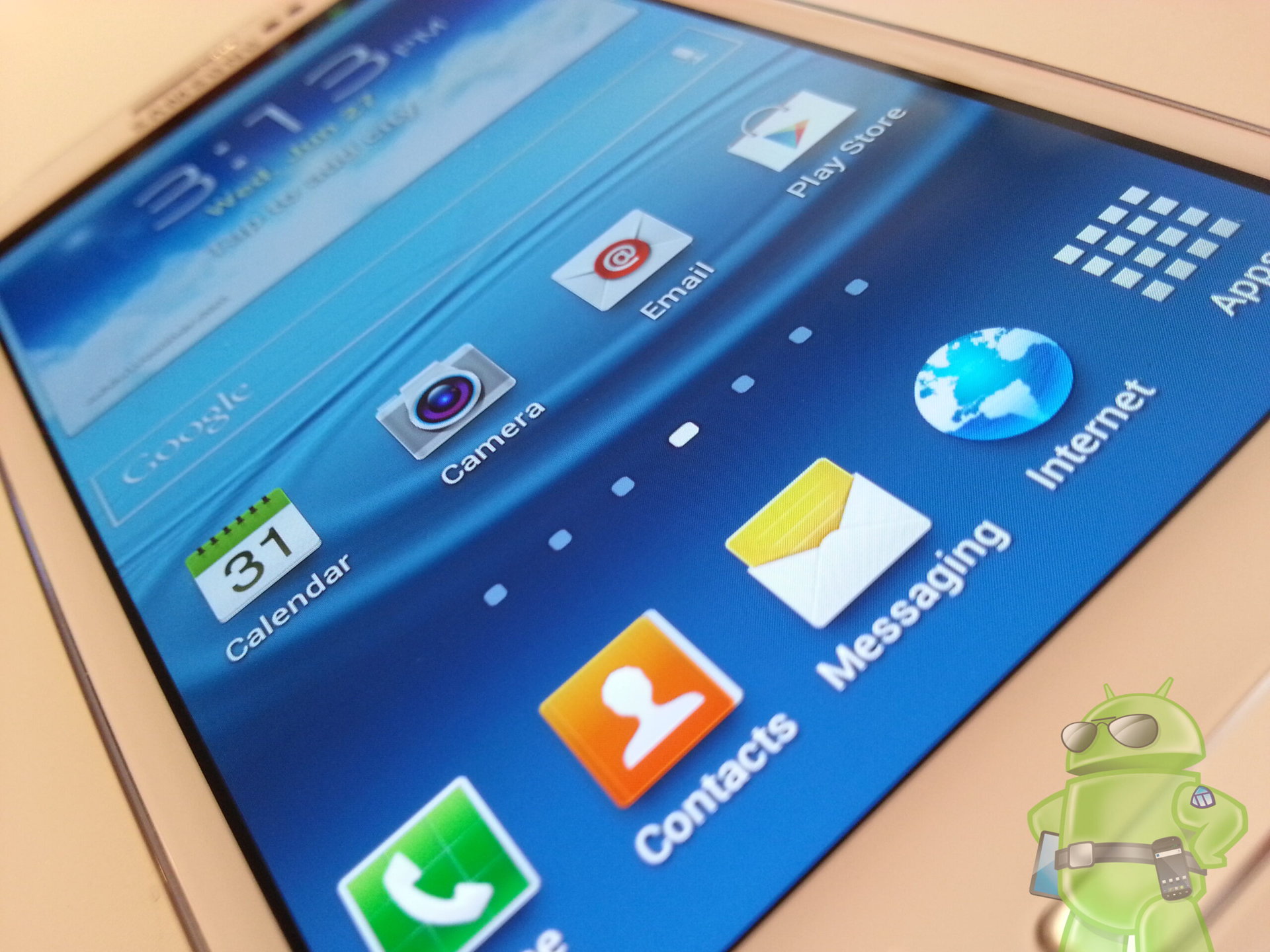
Cameras
All three devices are packing a capable 8MP rear-facing camera. The quality of the pictures and videos is superb, and each camera features many different settings and effects, which really make picture taking easier and more enjoyable. The Galaxy S3 features a 1.9MP front-facing camera, for quality video chatting, but the HTCEVO’s 1.3MP camera seems to do the job just as well.
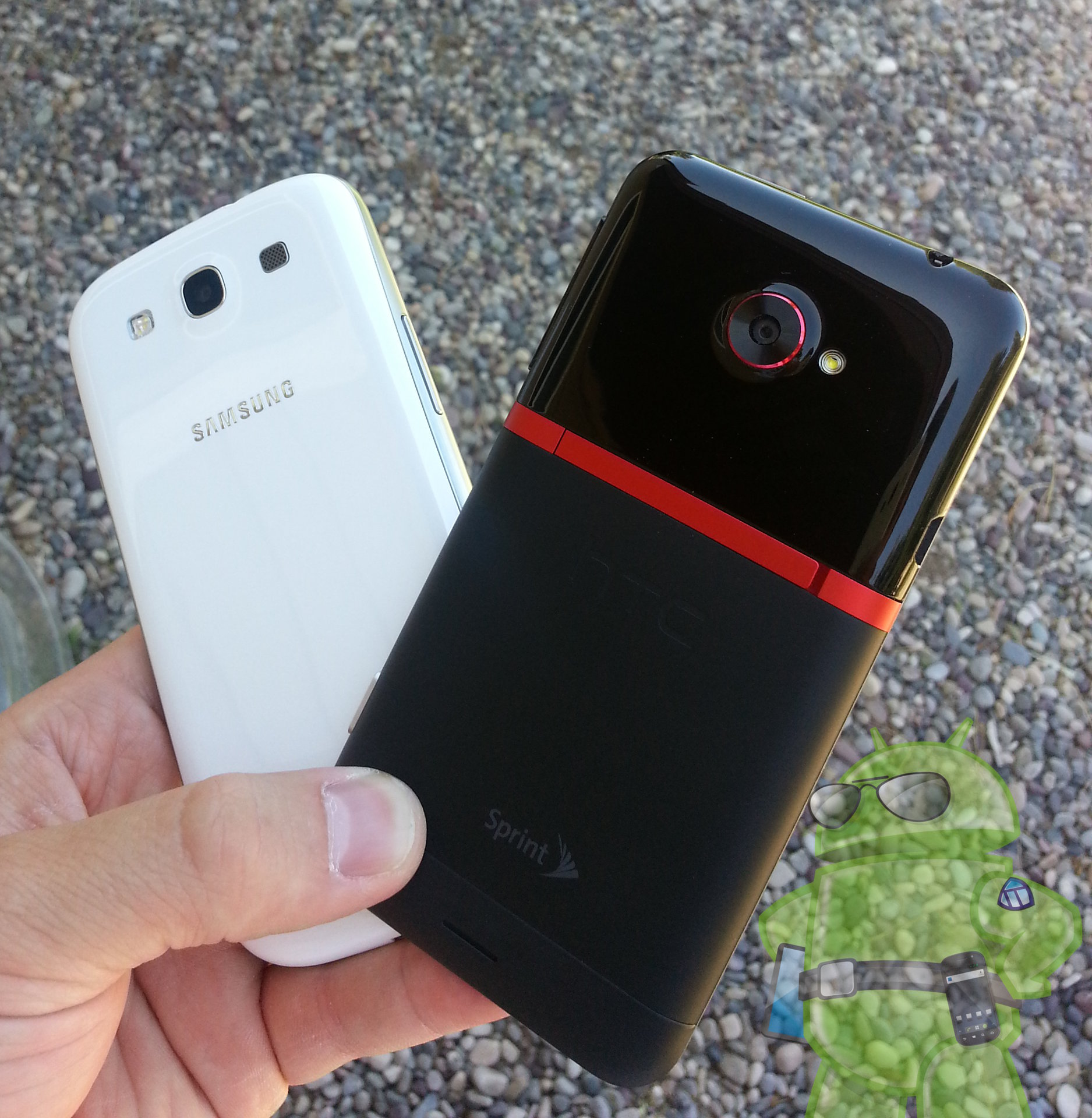
Here are some test shots taken with each device’s rear camera.
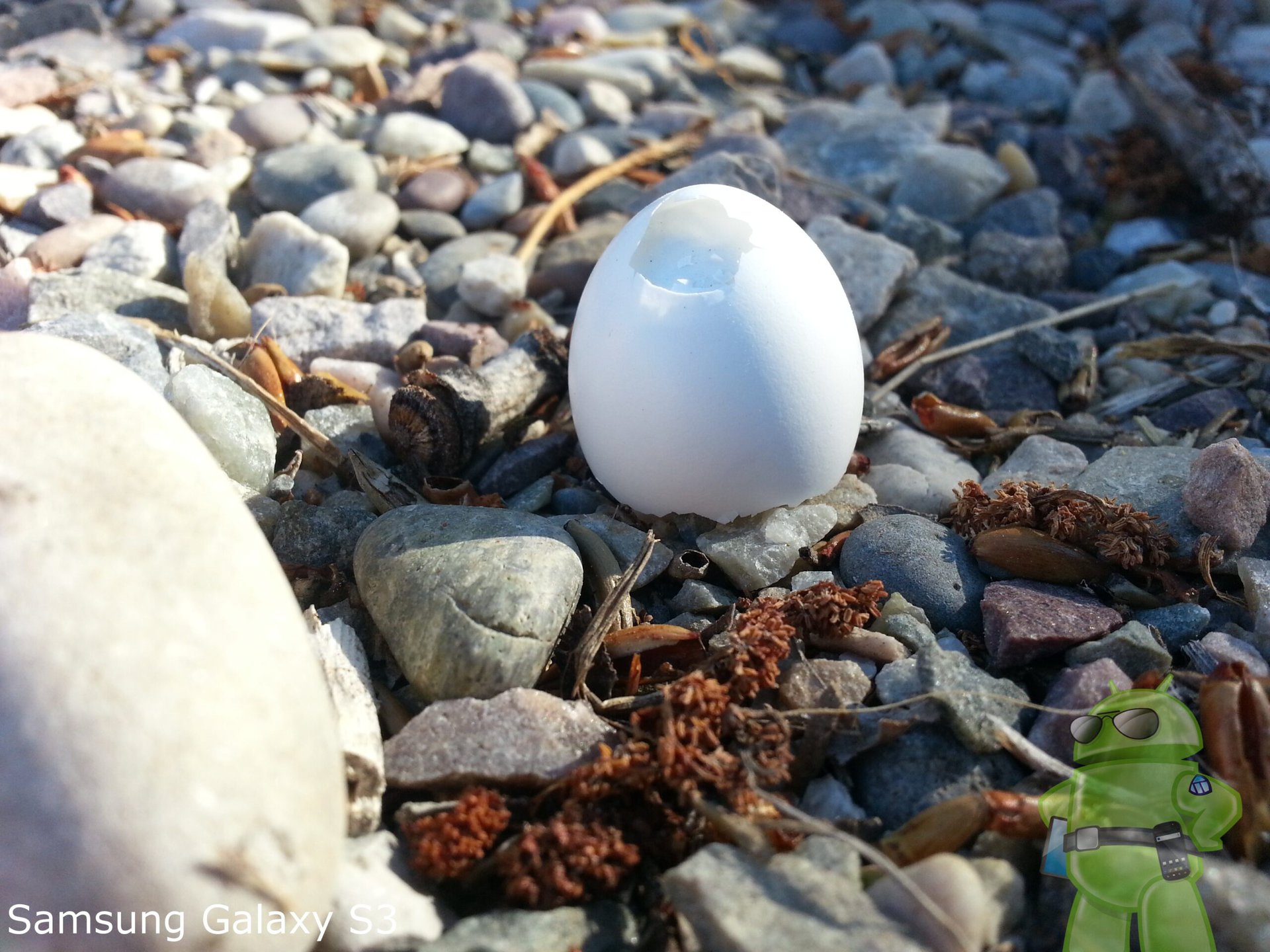
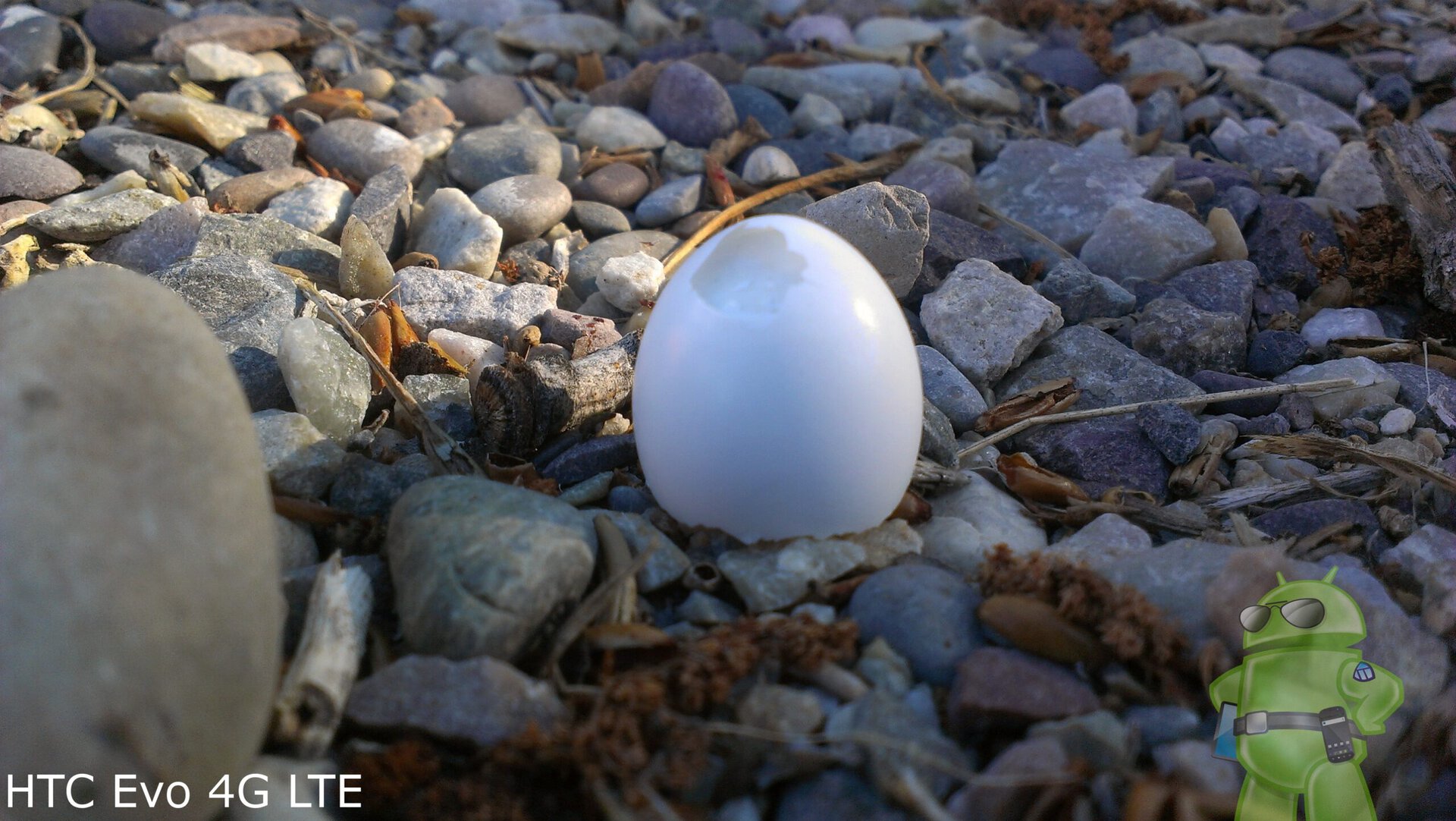
Speed and Performance
The HTCEVO 4G LTE and the Sprint Galaxy S3 are both equipped with the Snapdragon S4, a dual-core processor clocked at 1.5 GHz. The GSM/international Samsung Galaxy S3 is packing a Cortex A9 quad-core CPU, clocked at 1.4 Ghz. The Sprint Galaxy S3 comes with 2GB of RAM, while the EVO and GSM S3 each have only 1GB. The extra RAM within the Sprint GS3 allows more processes to run at once and provides the speed that is needed to perform heavy tasks. The EVO does not fall short, however, and can take just about any task you throw its way.
Here are a few benchmark scores to demonstrate each phone’s performance.
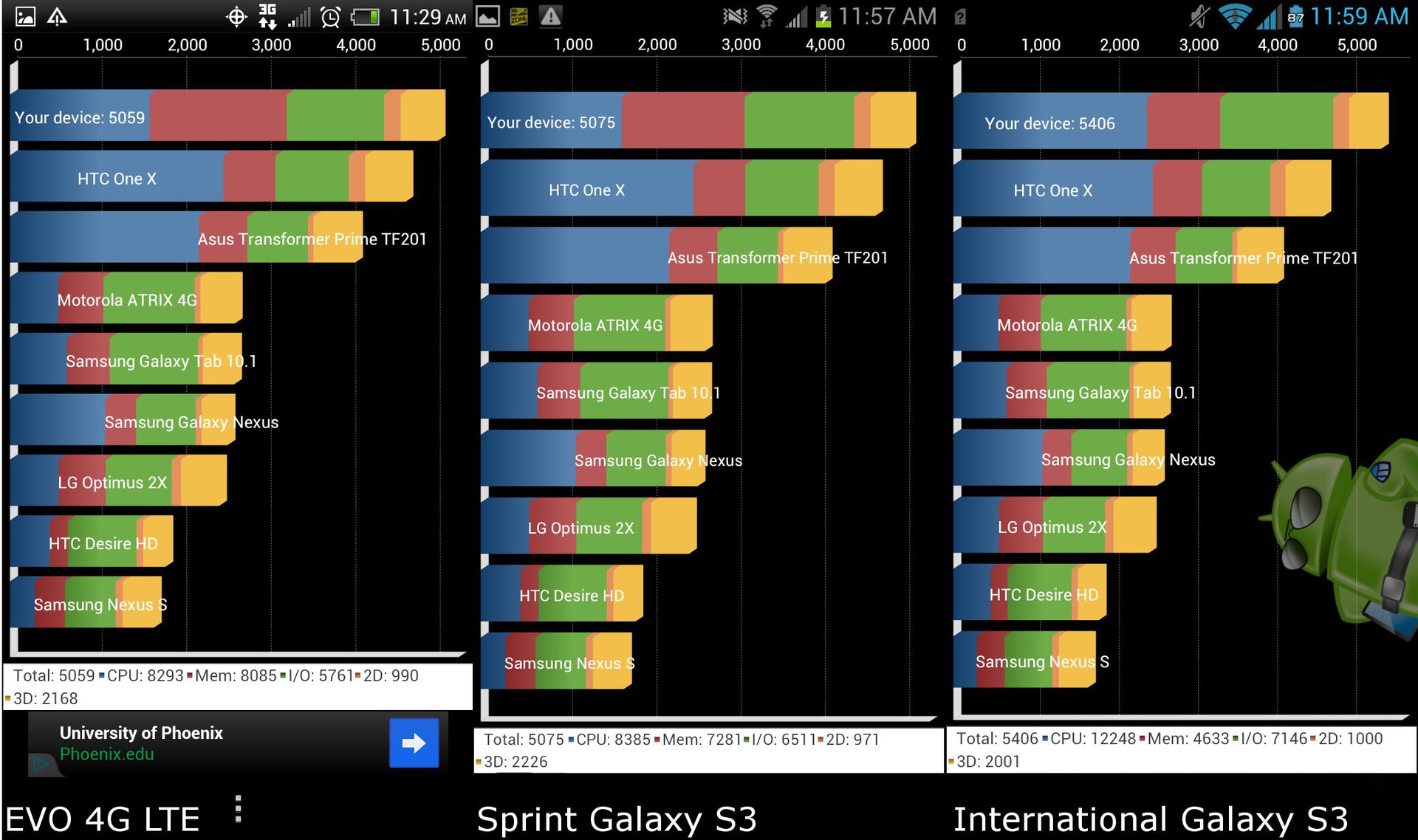
Make no mistake – this is not a dual core vs quad core debate. The Qualcomm S4 is a remarkably powerful SoC, and performs everything in record time while being excellent on battery life. That being said – the S3’s quad core A9 Exynos Soc is still the fastest thing on the block – but won’t be available in the US for those seeking an LTE backbone to cure their high-speed information highway addiction. It’s OK though, because in real world performance, it’s virtually impossible to know the difference between the two, as all three devices are lightning, blisteringly quick.
Pricing
The GSM Galaxy S3 might be out of the question for some users, sitting at a hefty $799 for an unlocked, SIM-free device. Of course, you won’t be able to use it on Sprint’s network at all.
The Sprint Galaxy S3 comes in at a more affordable $199 price tag, and coming in cheapest is the $129 EVO 4G (both with a contract). If you consider price to be a deciding factor, the HTCEVO 4G LTE is a more-than-safe choice, being that it has near identical specs to it’s GS3 counterpart.
Video Review
What would an Android Authority comparison be without a hands-on video!? Check our review out below!
Wrap Up
Each of the three devices that we reviewed is a fully capable workhorse. With a full spectrum of features at your disposal, its hard not to be torn over which device is the best. As for software, HTChas done a phenomenal job with polishing their Sense UI, while Samsung has packed as many features as it could into the new Touchwiz.
Will you go with the media-oriented HTCEVO 4G LTE with its deliciously color purist satisfying HD LCD display? Or will you rock the curvaceous Samsung Galaxy S3 with its rich colors and bottomless black on its HD Super AMOLED display? Let us know in the comments section! Bam!
[poll id=”109″]